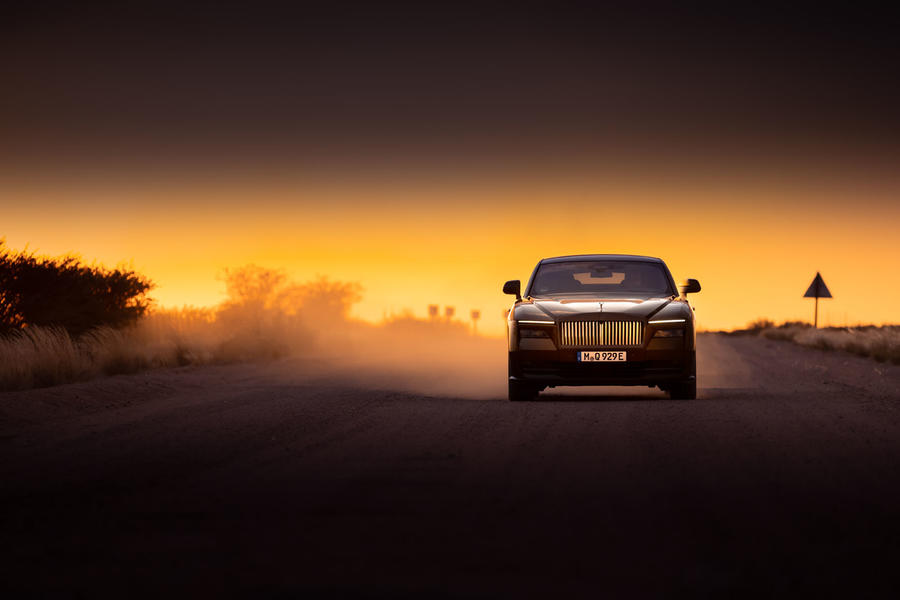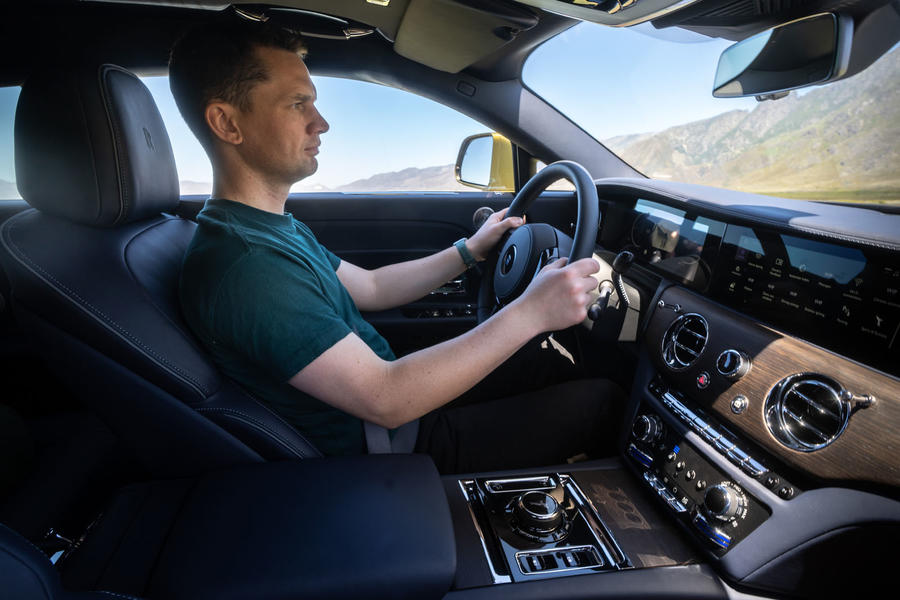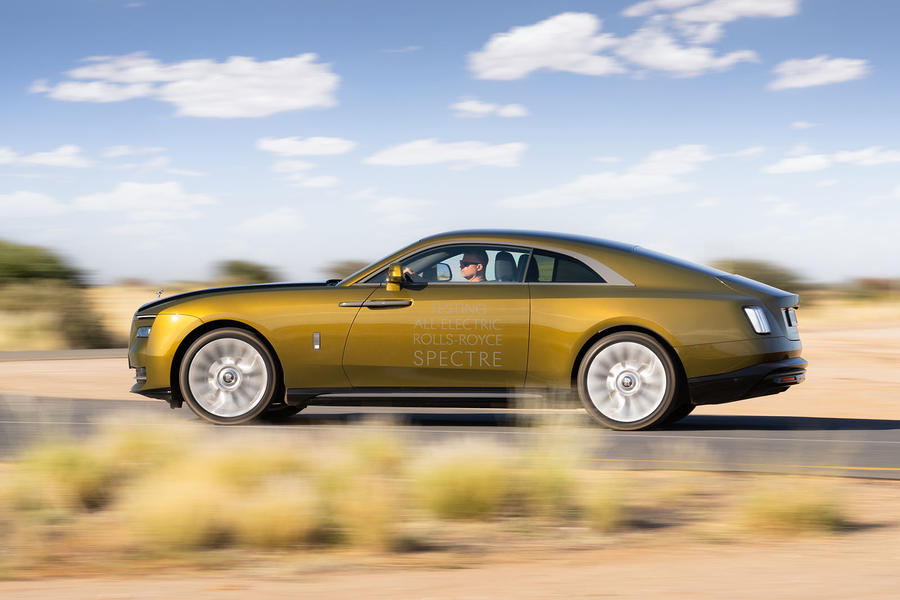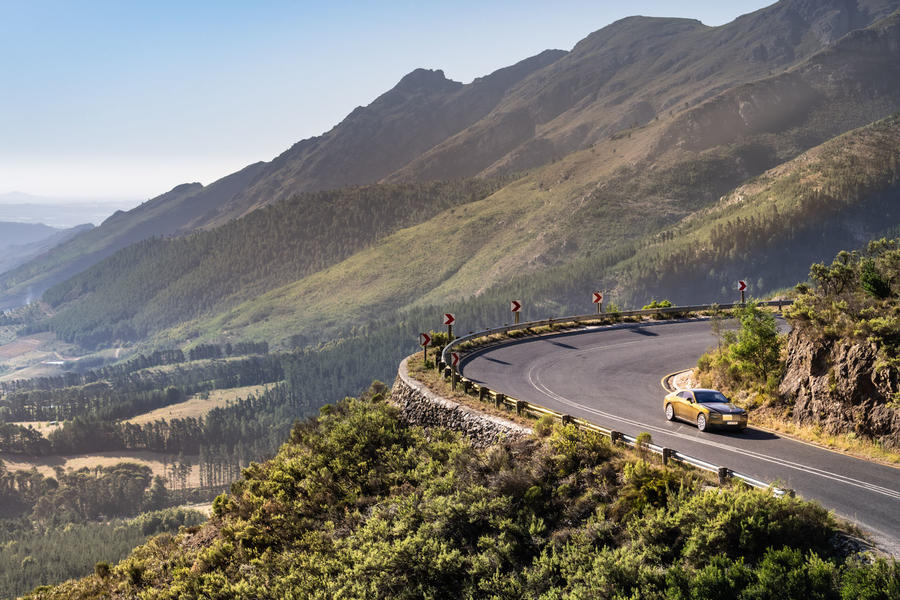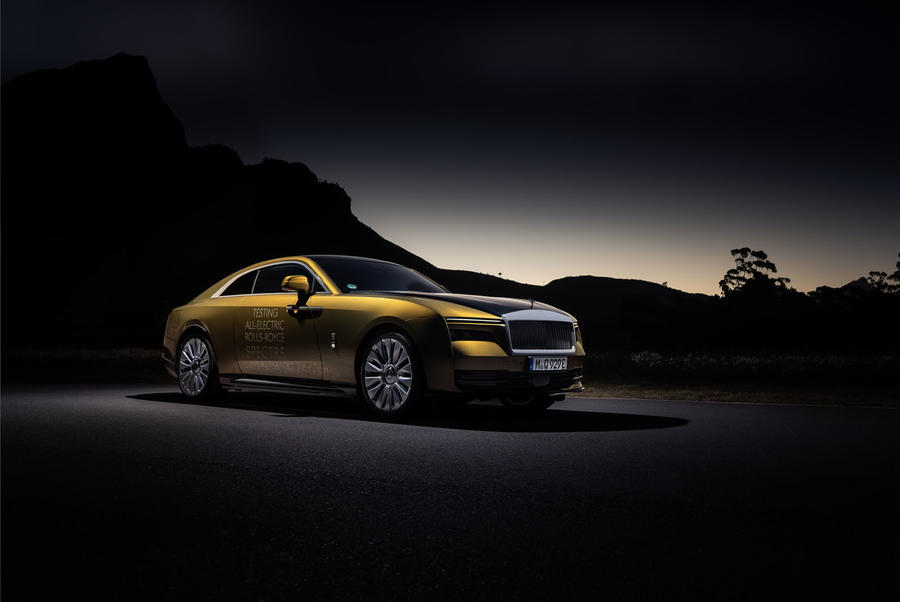“The Phantom Coupé is seen as one of the most striking Rolls-Royce cars, and it’s pretty rare: maybe only a couple of hundred [were made],” says Müller-Ötvös. “If you own one, look after it and don’t sell it… Clients say it would be great to bring it back, and this inspires what we do. We didn’t want to do an EV, we wanted to do the most luxurious coupé. Electric is just a by-product. This is just the next phase for V12.”
The Spectre was revealed late last year, and it looks like the finished article when we arrive in South Africa’s Western Cape to drive it. Yet although it looks nished from the outside, this isn’t an ordinary first drive: the car is only 60% ready for production and at least eight months away from being in the hands of its first customers towards the end of this year.
For this is part two of a story we first told in the spring of last year, when we got to ride in Spectre prototype number six in Sweden’s Arctic Circle, right at the beginning of the Spectre’s development programme. That was extraordinarily early to be offered such an opportunity, but Rolls-Royce wants the development of such a milestone model in its illustrious history documented, warts and all.
So now it’s to South Africa to join part three of the programme, with a further two stages to come. Not that there are many warts to find here. By the end of our drive, 60% seems barely believable; try 95% and just some detail changes to make. But this is Rolls-Royce.
“We’re never satisfied,” says Mihiar Ayoubi, Rolls-Royce’s director of engineering. “We’re always searching, provoking the car. It’s marginal gains, like in sport; we’re trying to make lots of very small detail changes to make up big changes. It takes much more to achieve exceptional.”
The Spectre starts from a pretty exceptional base to begin with. It’s based on Rolls-Royce’s bespoke aluminium spaceframe, the Architecture of Luxury, which was introduced first on the eighth-generation Rolls-Royce Phantom and used since on the Rolls-Royce Cullinan and Rolls-Royce Ghost. This makes much of its hardware familiar, including the clever active roll bars, adaptive dampers, Planar suspension, four-wheel steering and air springs, but the body is all new, as is, of course, the drivetrain and the electric architecture (what Ayoubi calls the car’s “backbone”, allowing its 100-plus complex sub-systems to be integrated with one another and deal with more than 140,000 send-and-receive functions).
